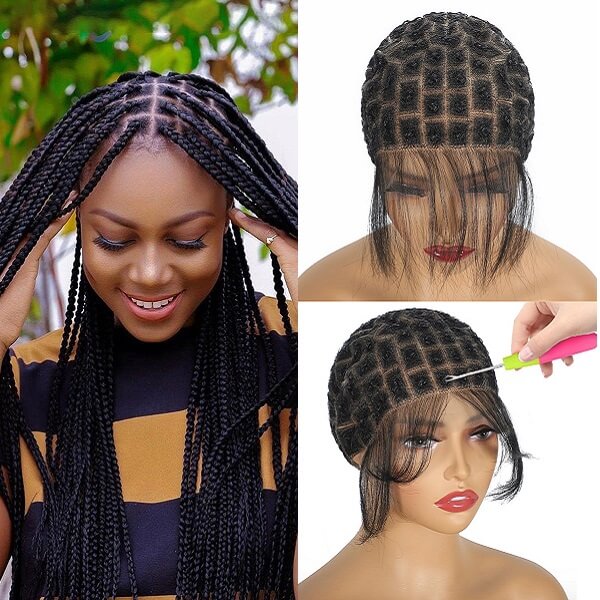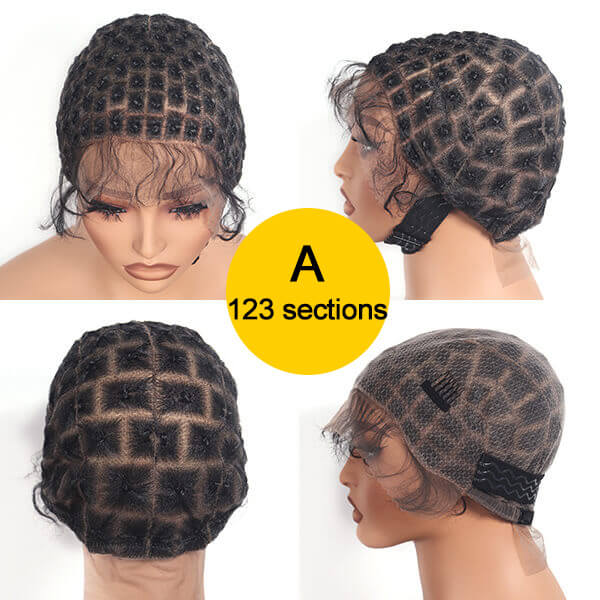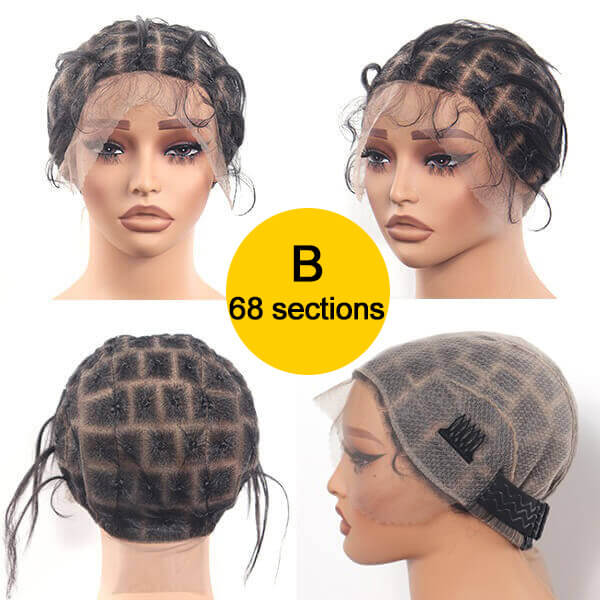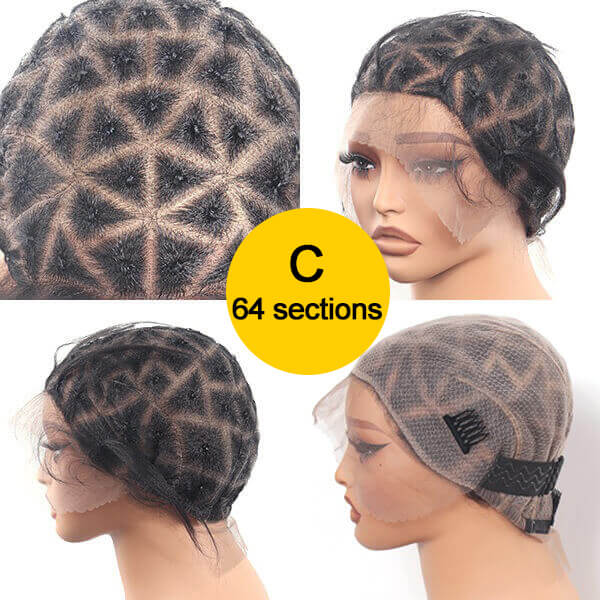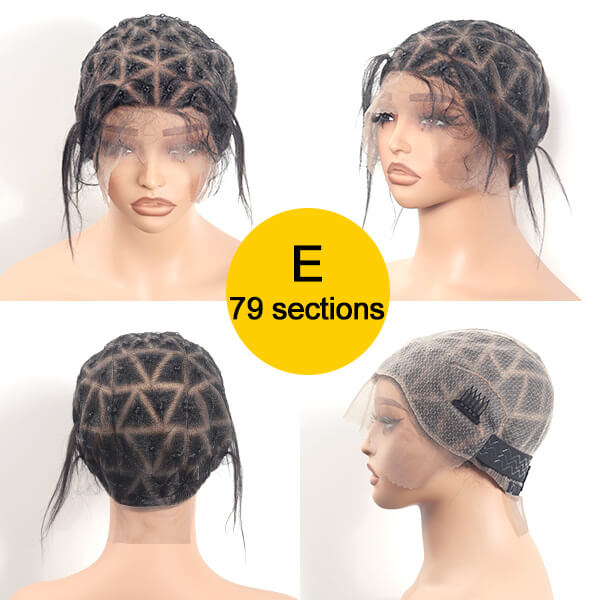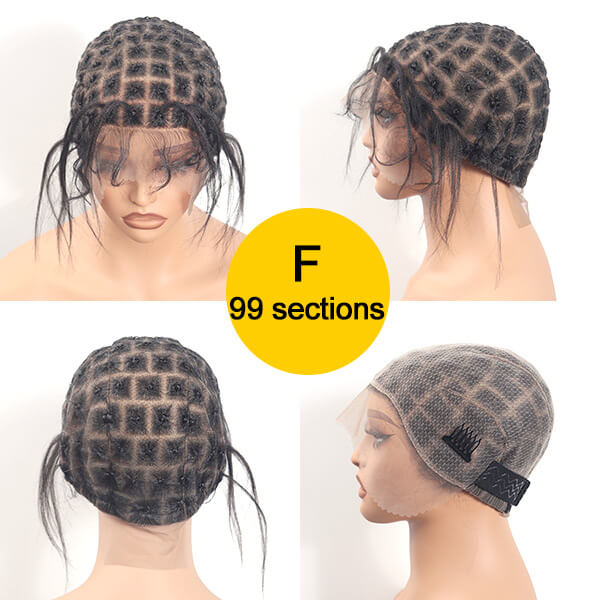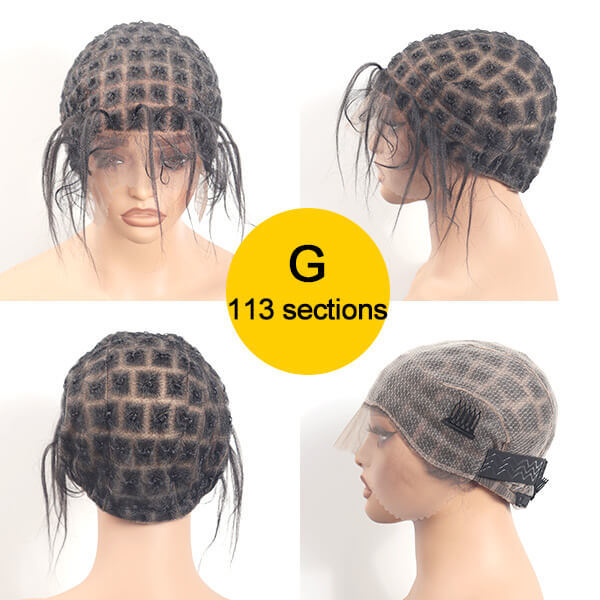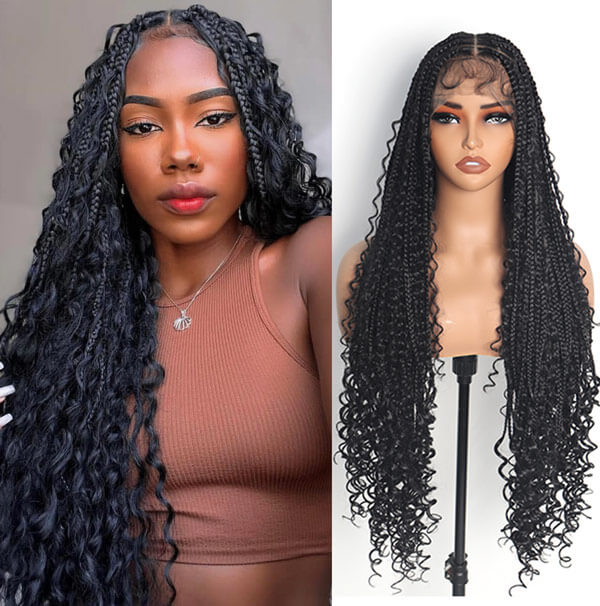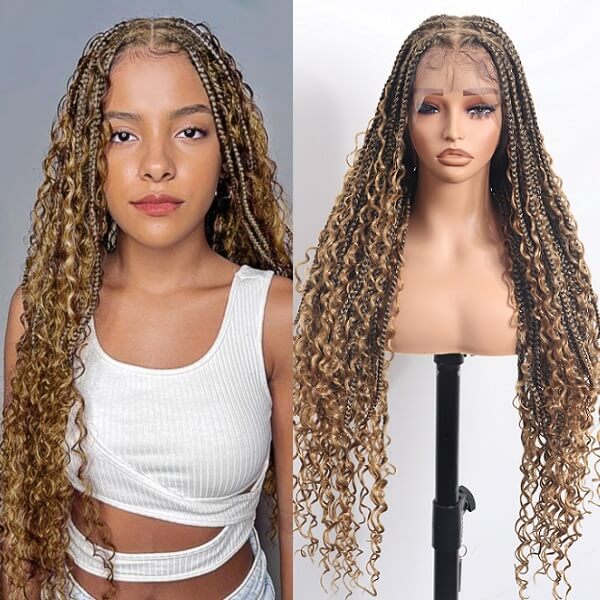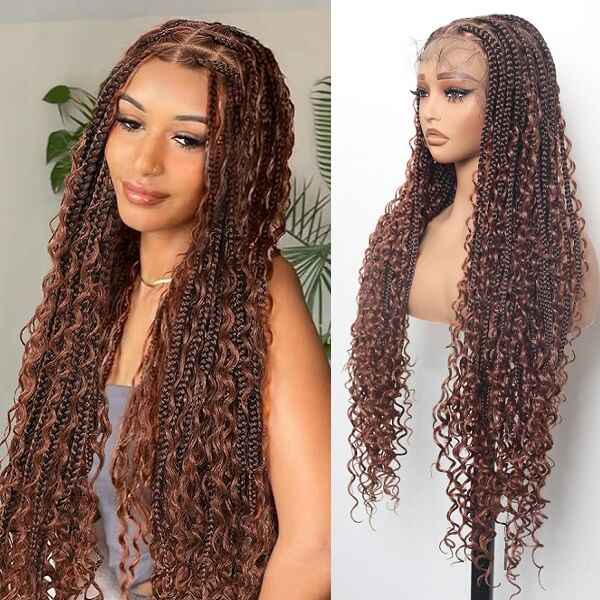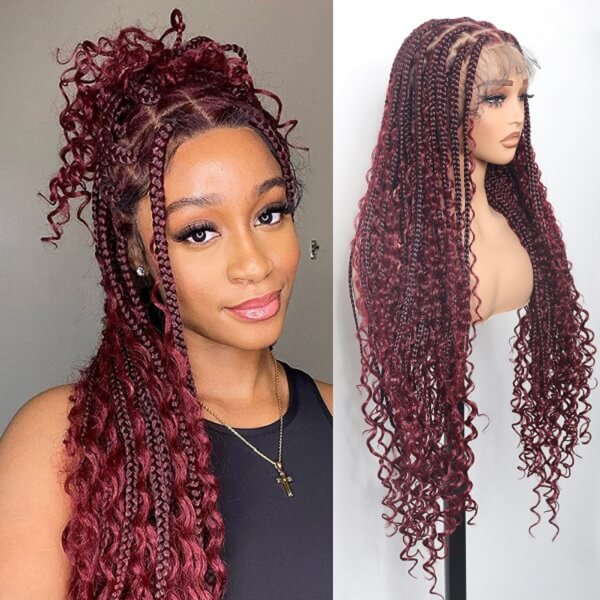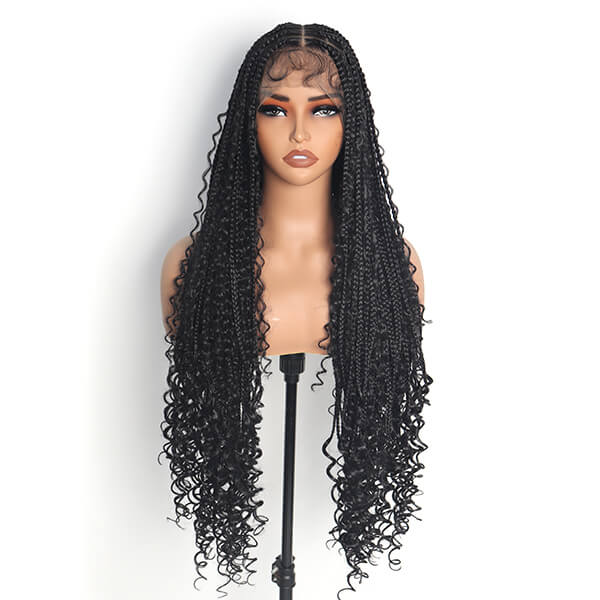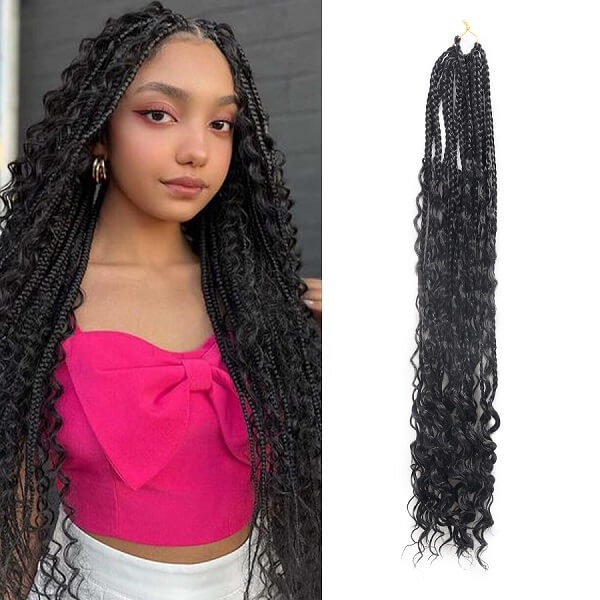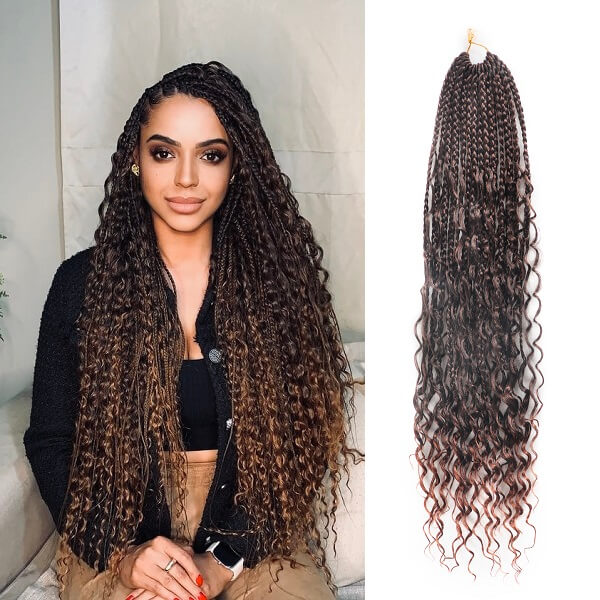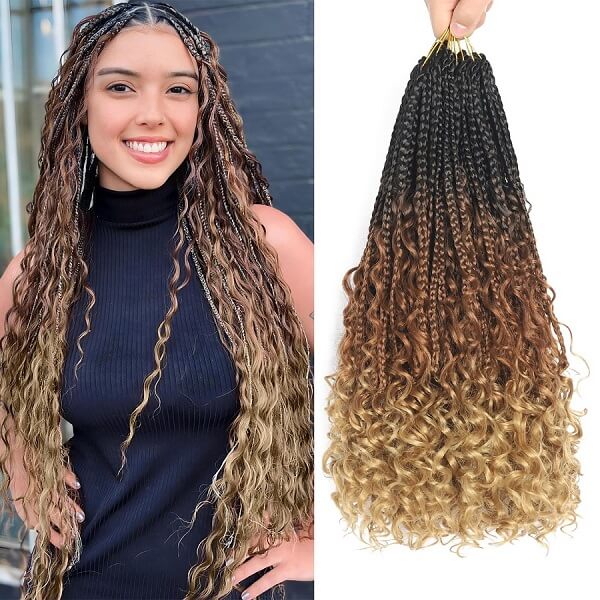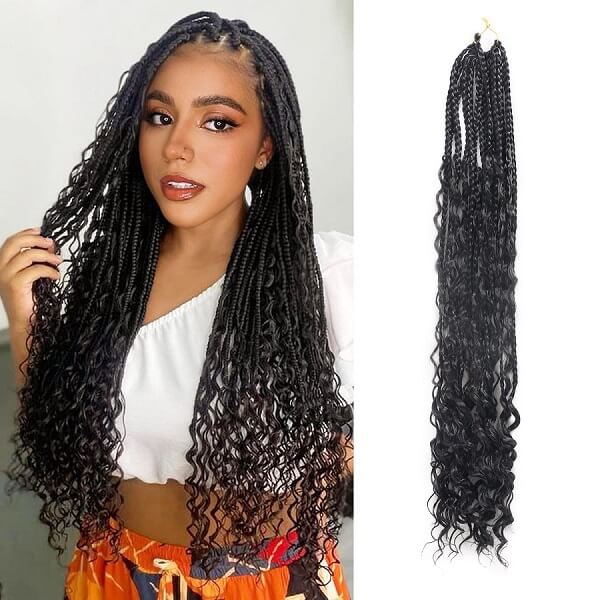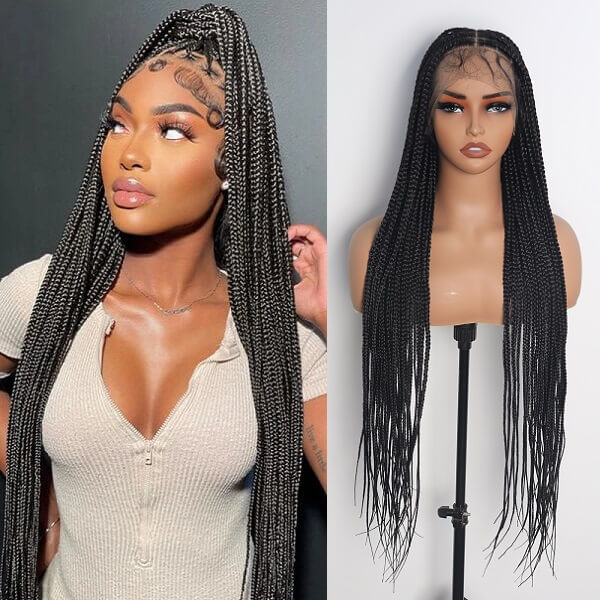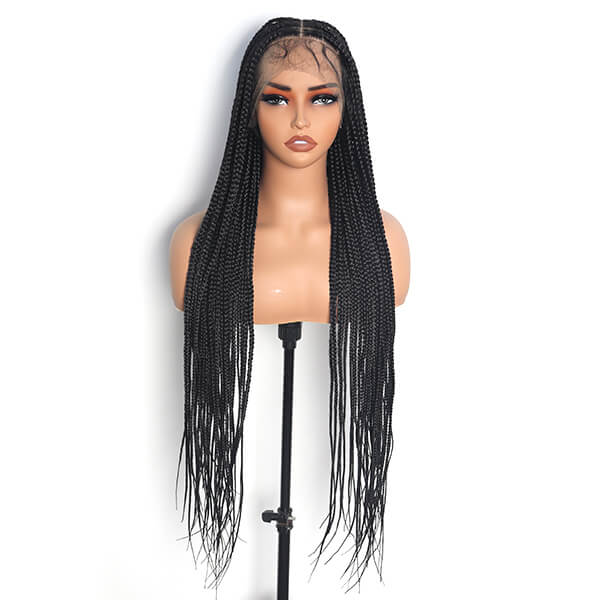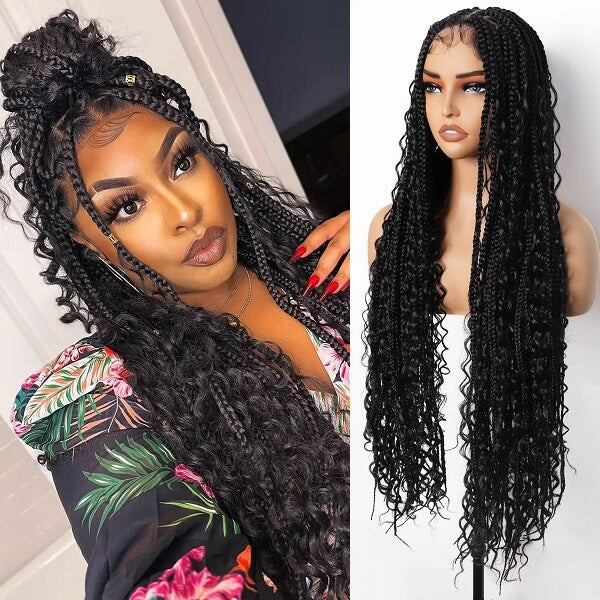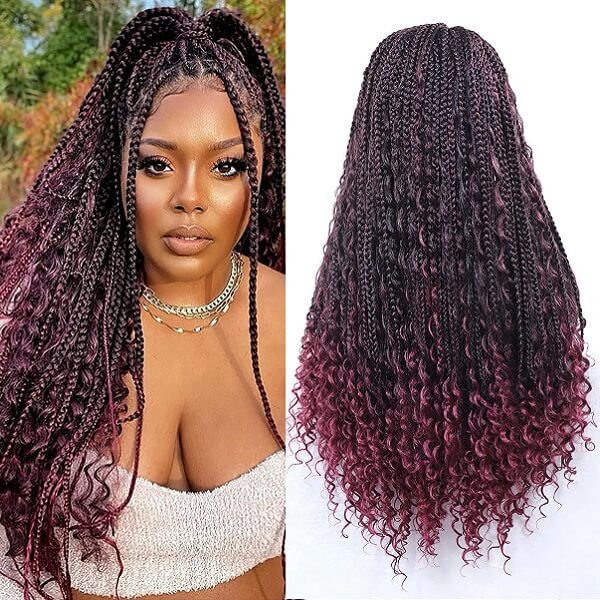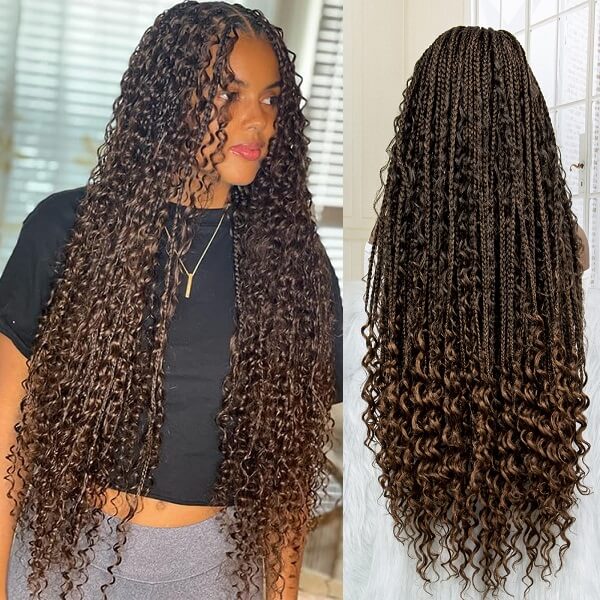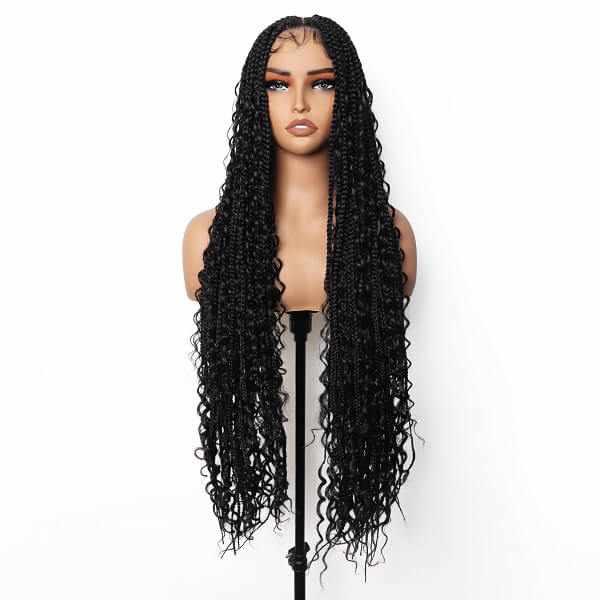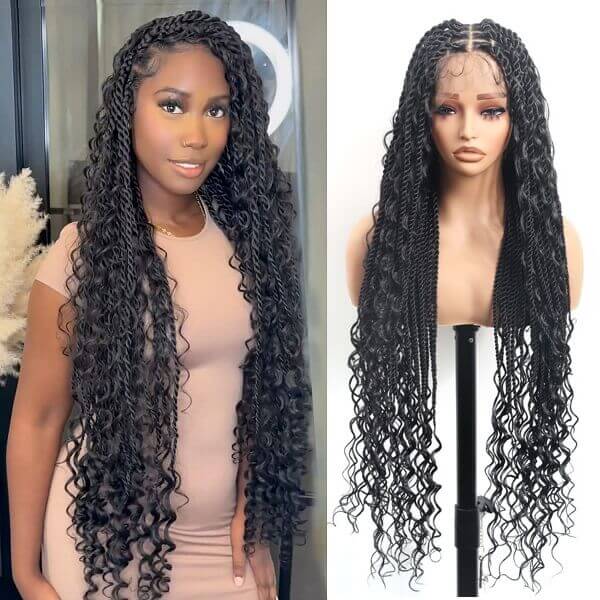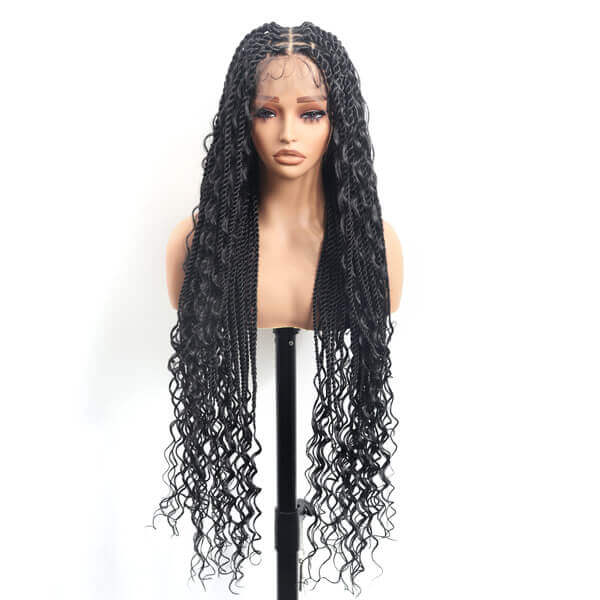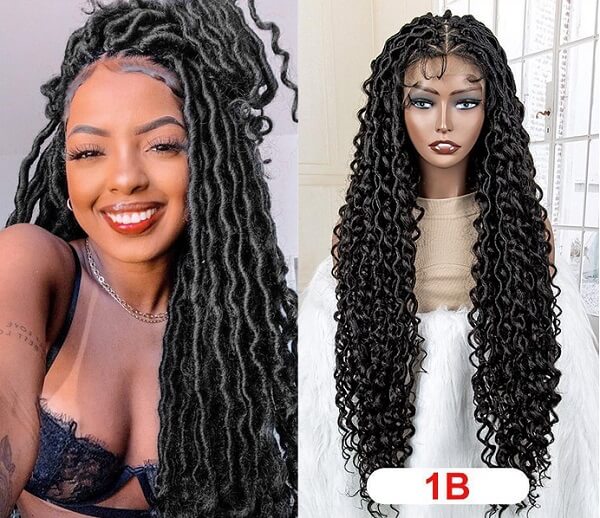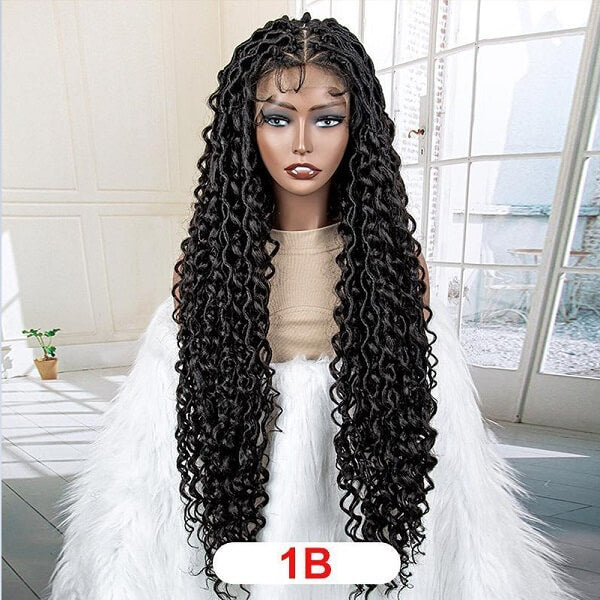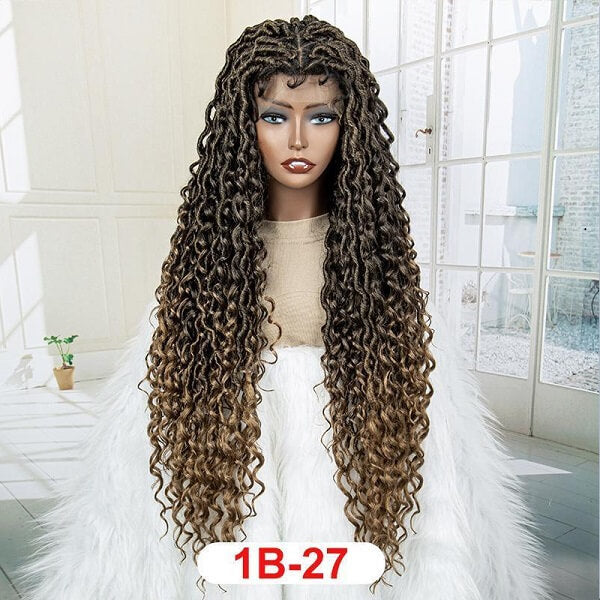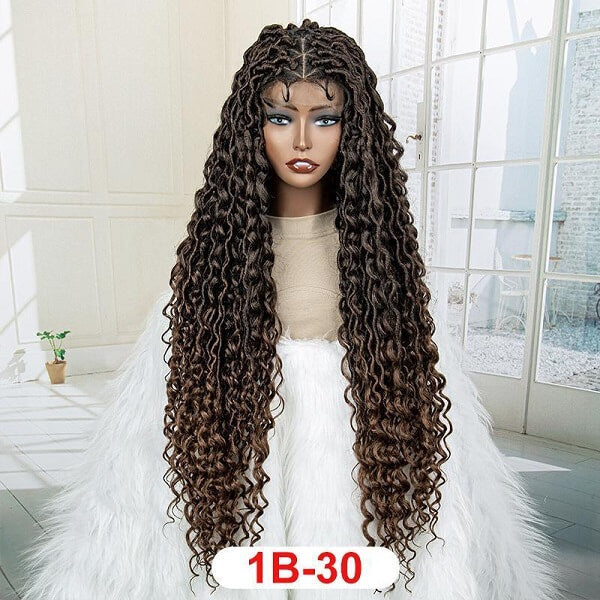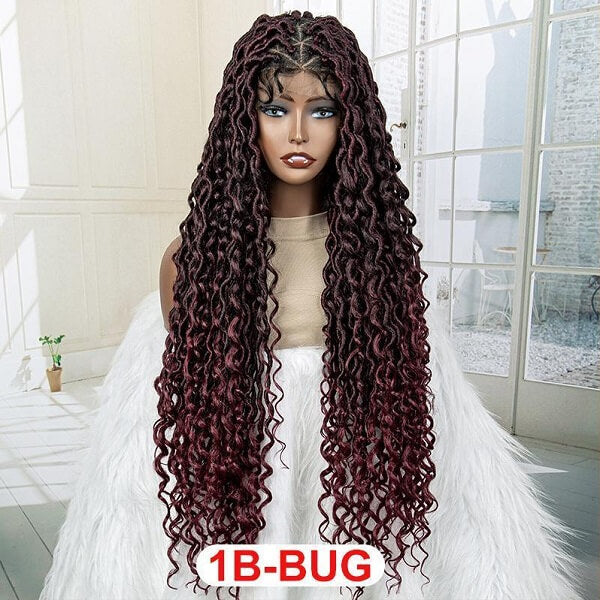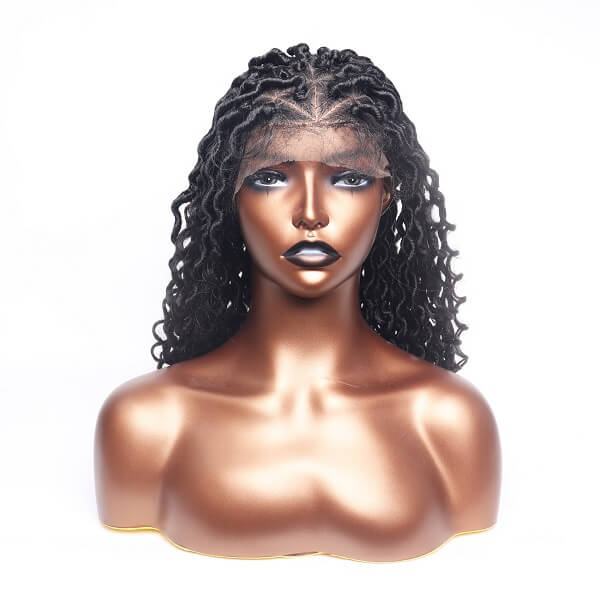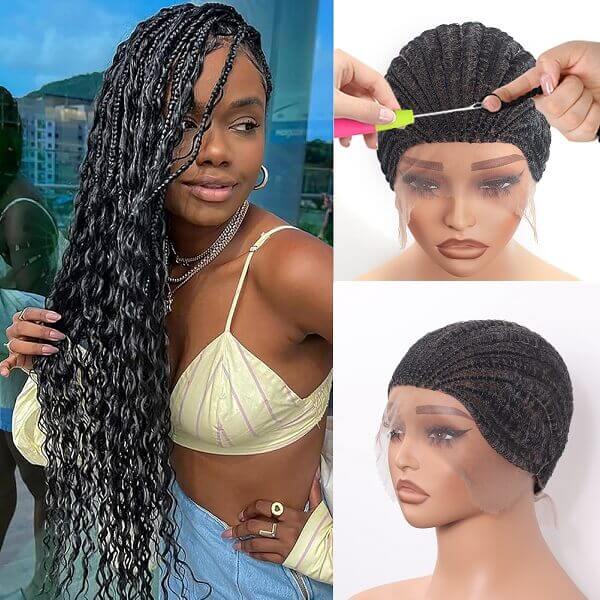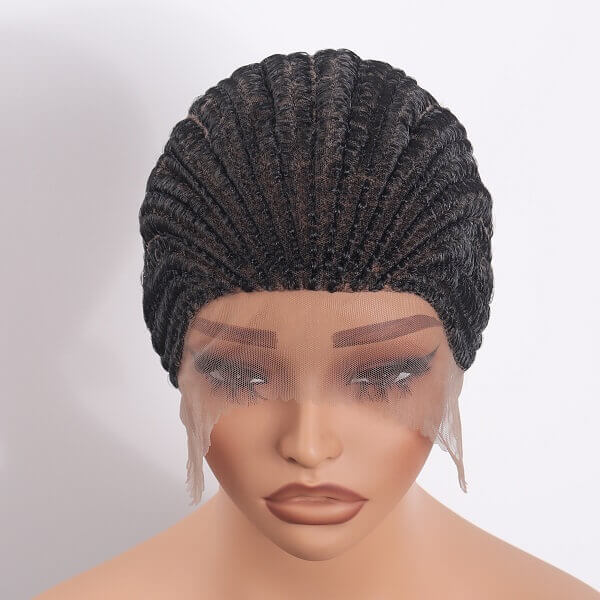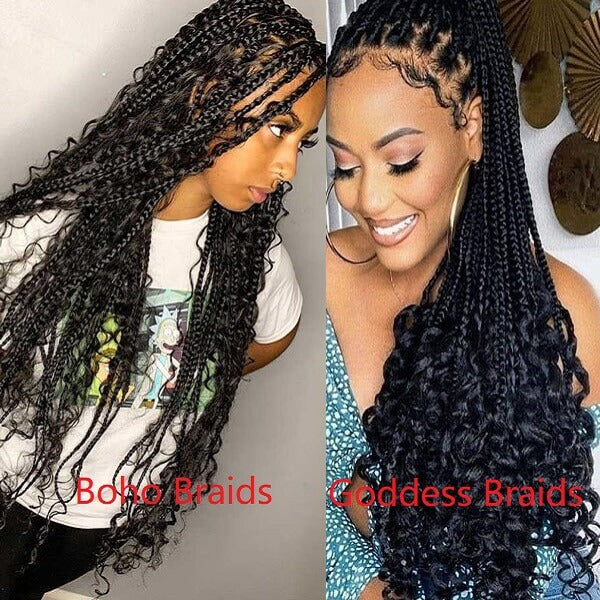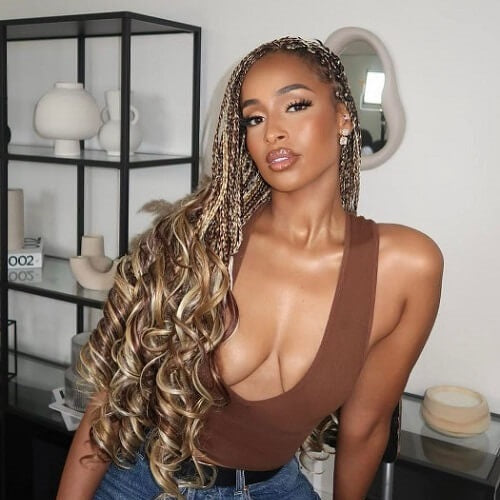Cornrows and French braids might look similar at first glance, but they each bring their own unique flair and technique. If you’re trying to decide between these two stylish options, understanding their differences can make a big difference in how your look turns out and how you care for it. Whether you’re eyeing a new hairstyle or considering braided wigs, knowing what sets cornrows and French braids apart will help you pick the best option for you. Let’s dive into what makes each style unique and why it matters for your hair game.

What Are Cornrows?
Cornrow braids are a classic and culturally rich braiding style with deep roots in African history. The technique involves braiding the hair close to the scalp in neat, straight lines, creating a sleek and structured appearance. The term "cornrows" comes from the visual resemblance of the braids to rows of corn in a field.
Braiding Technique
The cornrow technique is distinct for its tight, close-to-the-scalp braiding. Each braid is woven directly against the scalp in straight or curved lines, resulting in a smooth, polished look. This method not only creates a striking visual effect but also provides a protective style that can help maintain hair health.
Popular Cornrow Styles and Variations
Cornrows are incredibly versatile and come in several popular variations, including:
- Straight-Back Cornrows: These are simple and classic, with braids running straight from the hairline to the nape of the neck.
- Curved Cornrows: Featuring braids that follow curved patterns, this style adds a dynamic and stylish twist to the traditional look.
- Two Cornrows: A minimalistic approach with just two large cornrows running down either side of the head, often styled for convenience and a bold statement.
- Zigzag Cornrows: This variation incorporates zigzag patterns instead of straight lines, offering a unique and eye-catching design.
- Fulani Cornrow Braids: Named after the Fulani people of West Africa, this style includes intricate braiding patterns with beads and often features small, decorative elements.

What Are French Braids?
French braids are a beloved and versatile hairstyle with a sophisticated, elegant appeal. Originating from France, this braiding technique has been a staple in both everyday and formal looks for centuries. The French braid is known for its graceful appearance and ability to incorporate various hair sections seamlessly.
Braiding Technique
The French braid begins at the crown of the head, where three sections of hair are used to start the braid. As the braid progresses downward, additional sections of hair from the sides are added to the main braid. This process creates a woven effect that looks like a continuous, intricate pattern. The result is a braid that sits close to the scalp, giving a smooth and sleek appearance that is perfect for both casual and elegant occasions.

Popular Styles and Variations
French braids can be styled in numerous ways to suit different preferences and occasions:
- Classic French Braid: This is the traditional braid, starting from the crown and incorporating additional hair as it goes down. It’s a timeless and elegant choice for any event.
- Fishtail French Braid: This style combines the classic French braid technique with a fishtail braid, resulting in a unique, textured appearance.
- Side French Braid: This variation involves braiding to one side of the head, adding a chic and asymmetrical twist to the classic look.
These variations offer a range of options from the classic to the contemporary, making French braids a versatile choice for any hairstyle.

Comparing Cornrows and French Braids
When it comes to braided hairstyles, cornrows and French braids each have their own distinct techniques and styles. Understanding these differences can help you choose the right style for your needs and preferences.
Techniques and Styling
- Cornrows: The cornrow technique involves braiding the hair very close to the scalp in tight, straight lines. The braids are created by weaving the hair in a uniform pattern that runs parallel to each other. This method often starts at the hairline and continues down the head, creating a sleek, close-to-the-scalp appearance.
- French Braids: French braids begin at the crown of the head with three sections of hair. As the braid progresses, additional hair from the sides is incorporated into the braid. This technique results in a braid that sits flush against the scalp and gradually expands outward as it descends. The French braid creates a more intricate and interwoven pattern compared to the straight, uniform lines of cornrows.
Appearance and Result
- Cornrows: Cornrows offer a structured, geometric look with rows of braids that follow a specific pattern. They are known for their clean, polished appearance and are often styled in straight or curved lines. This style provides a neat, orderly effect that can be both simple and elaborate depending on the design.
- French Braids: French braids have a more fluid and woven appearance. They start from the crown and grow more complex as additional hair is incorporated. The result is a braid that appears to be seamlessly integrated into the hair, with a soft, flowing effect. French braids often have a more textured and layered look compared to the uniformity of cornrows.
Maintenance and Longevity
- Cornrows: Cornrows are low-maintenance and can last several weeks with proper care. Regular upkeep involves keeping the scalp clean and moisturized, and avoiding excessive manipulation of the braids. Cornrows can also protect the hair and scalp from damage if maintained properly. However, they may require regular touch-ups to keep the braids looking fresh.
- French Braids: French braids typically require more frequent maintenance, especially if worn as a daily style. They need to be re-braided periodically to maintain their neat appearance. While they are less protective than cornrows, French braids are less likely to cause tension on the scalp if done correctly. Regular washing and conditioning are essential to prevent tangling and maintain the braid’s integrity.
Cultural Significance
- Cornrows: Cornrows have deep cultural roots, particularly within African communities. They have been used for centuries as a form of cultural expression, with various patterns and styles often representing different tribes and regions. Cornrows also serve as a protective style, helping to maintain hair health and promote growth.
- French Braids: While French braids are widely recognized and appreciated globally, their cultural significance is less pronounced compared to cornrows. The French braid has been popularized through Western fashion and media, becoming a staple in both everyday and formal hairstyles. Its elegance and versatility make it a favored choice for many.
Understanding these aspects of cornrows and French braids can help you make an informed choice about which style best suits your needs and preferences.

Cornrows vs. French Braids: Choosing the Right Style
When deciding between cornrows and French braids, there are several factors to consider to ensure you choose the style that best fits your needs and preferences. Here’s a guide to help you make the right choice:
Factors to Consider
- Hair Type: Different braiding styles work better with different hair types. Cornrows are ideal for natural hair textures, particularly for those looking for a protective style that can last for several weeks. They work well with both straight and curly hair. On the other hand, French braids are versatile and can be adapted to various hair types, including straight, wavy, and slightly curly hair. They are great for those who prefer a more elegant or refined look.
- Desired Look: Consider the look you want to achieve. Cornrows offer a sleek, uniform appearance and can be styled in various patterns, making them perfect for a structured, neat look. If you prefer a more intricate, flowing style that can be dressed up or down, French braids might be the better choice. They create a beautiful, woven effect that adds texture and dimension to your hair.
- Occasion: The occasion can also influence your choice. Cornrows are excellent for long-term wear and can be ideal for everyday activities or special events where you need a low-maintenance style. They are also popular for sporting activities due to their durability. French braids are more suitable for occasions where you want to make a stylish impression, such as formal events or social gatherings. Their elegant and refined look can complement a range of outfits and settings.

Tips for Achieving the Best Results
-
For Cornrows:
- Preparation: Make sure your hair is clean, detangled, and well-moisturized before braiding. This helps prevent breakage and ensures a smooth braiding process.
- Precision: Use a fine-toothed comb to section your hair evenly and create neat rows. This will result in a cleaner, more polished look.
- Maintenance: Keep your scalp moisturized and avoid excessive manipulation of the braids. Regularly washing and conditioning your scalp can help maintain the health of your hair and extend the longevity of the cornrows.
-
For French Braids:
- Start with Clean Hair: French braids are easier to create and maintain with clean, slightly damp hair. Adding a texturizing spray can help give the hair grip and prevent slipping.
- Practice the Technique: Begin braiding from the crown and incorporate small sections of hair gradually. Practice will help you get a more even and tight braid.
- Secure the Braid: Use a small, clear elastic band to secure the end of the braid. For added hold, consider using a light hairspray to keep the braid in place.
By considering your hair type, desired look, and the occasion, and following these tips, you can choose the braiding style that best suits you and achieve the best results.

Conclusion
In summary, cornrows and French braids each offer unique styling options and techniques. Cornrows are characterized by their tight, close-to-the-scalp braids in straight or curved rows, providing a sleek and structured look that can last for weeks. French braids, on the other hand, start at the crown and incorporate additional hair as the braid progresses, resulting in a flowing, textured appearance that can be both elegant and versatile.
While both styles involve braiding and can create beautiful results, they are distinct in their techniques and end effects. Cornrows and French braids are not the same, as cornrows are more about neat, parallel lines close to the scalp, whereas French braids involve a more intricate weaving of hair that expands outward from the crown.
Ultimately, whether you choose cornrows or French braids depends on your hair type, desired look, and the occasion. Each style has its own charm and practical benefits. For those looking to experiment with these styles or explore other options, don’t forget to check out the range of braided wigs and styles available at mybraidedwig.com. With a variety of options to suit every taste and need, you’ll find the perfect look to enhance your hairstyle game.
Related Articles:
Discover 50 Stunning Cornrow Braids Hairstyles
Stitch Braids vs. Cornrows: What Is The Difference?
How to Achieve a Youthful Look with Cornrow Braids?
How to Achieve Perfect Two Cornrows?


